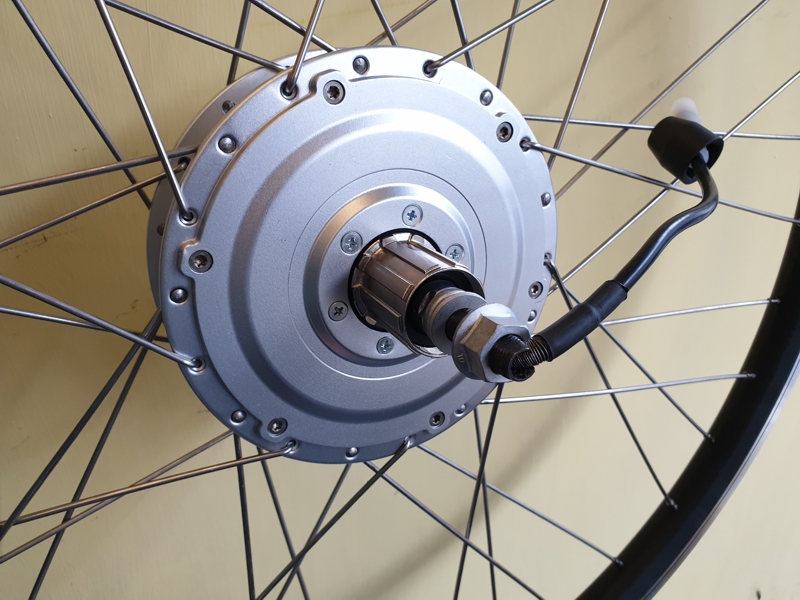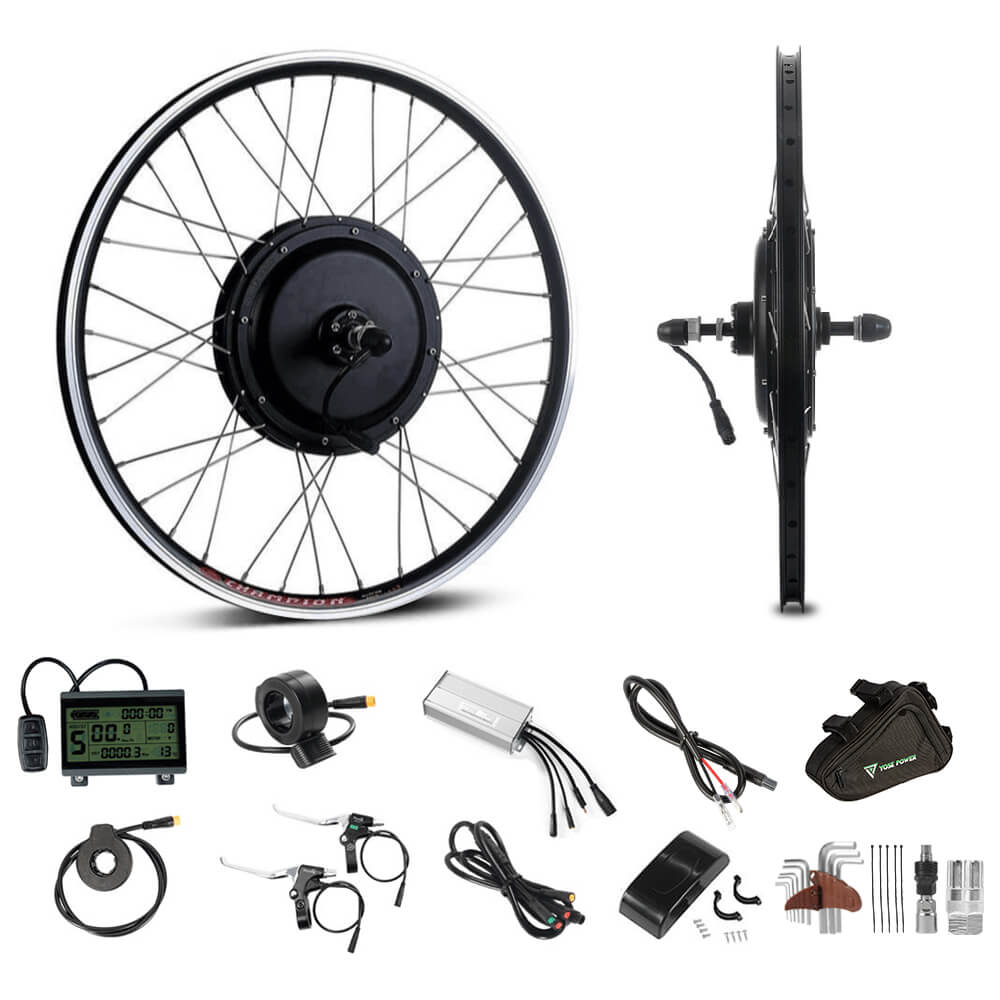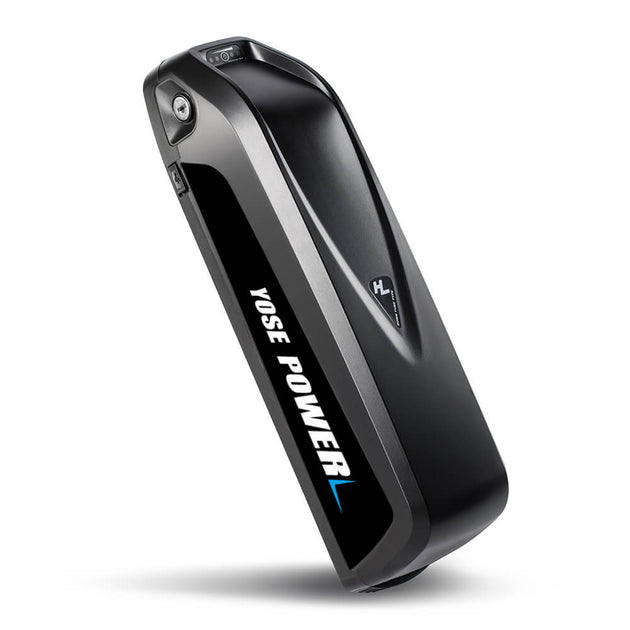Yeah fortunately (or unfortunately!) this one is definitely new. The guy needed the 36v model and was just out of the returns period.
I've seen this one but I don't fully understand the freewheel/cassette differentiation.
What kind of bike setups work with freewheel motors? Should I avoid this setup entirely?
Hub Motor 48V1000W 26" Rear Motor Bicycle E-Bike Hub Conversion Kit Black DIY E-bike LCD Display 1.Technical Data and Packing listRear motor with 26" wheel for Freewheel x 1:48V 1000W , installation width: 135mm, diameter: 242mmGearshift: 7 speed shimano freewheel12G spokes with double wall...
yosepower.com
Well you got a brilliant deal on that battery then but it does restrict you somewhat. Anyway which bike are you aiming to get or are you basing it on the most suitable ebike kit?
If you are buying a cheap new bike then its probably freewheel based anyway. Despite that kit saying includes Shimano 7 speed freewheel it is not pictured in the included items. Anyway if you bought a 6 speed freewheel based bike then you can use the 6 speed freewheel no problem and the bike will come with a 6 speed shifter.
The issue is the legality of the kit but it does include a display and you will be able to restrict it to the legal limit in the settings I'm sure but it will never be fully legal. You will probably want to remove the 1000W sticker on the hub motor too. This sort of bike would be compatible;
https://www.argos.co.uk/product/9308435 or a similar s/hand bike.
The Voilamart 1000W kits used to have a physical wire that limited the controller to lower watts and a 15.5mph speed limit but that kit looks like it would be through the display options to restrict it.
Don't forget there is a yose discount code if you join their mailing list.
Although it looks like the kit is cheaper on ebay and does show the freewheel.
Find many great new & used options and get the best deals for 48V1000W 26" Rear Motor with 7S Freewheel E-Bike Hub Conversion Retrofit Kit at the best online prices at eBay! Free delivery for many products.
www.ebay.co.uk
So you will end up with a spare rear wheel and possibly a 7 speed freewheel to sell to help recover some costs. There could be some bonuses and discounts available due to the holiday weekend. That ebike kit shows as 750 nectar points for me which is about £3.75 in real money.
I didn't realise 48V and geared hub motors were so rare. It looks like you are pretty much forced to have a direct drive hub motor with 48V.
I bought a kit of amazon sometime ago which I haven't fitted to a bike yet but its 48V 500W 20" wheel and geared, I didn't realise how rare it was when I bought it.













